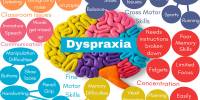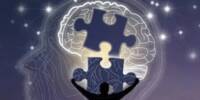The relationship between social rank and stress response is a topic of interest in the field of social psychology. Several studies have been conducted to investigate how individuals’ social status or perceived social rank can influence their physiological and psychological responses to stressful situations. These studies frequently use concepts from social dominance theory and stress research to investigate the complex interplay between social hierarchies and stress responses.
Scientists say their study could shed light on stress-related mental illnesses, but that more research is needed. Can an individual’s social status influence their level of stress? Tulane University researchers investigated this question and concluded that social rank, particularly in females, does affect stress response.
Tulane psychology professor Jonathan Fadok, Ph.D., and postdoctoral researcher Lydia Smith-Osborne investigated two types of psychosocial stress, social isolation and social instability, and how they manifested themselves based on social rank in a study published in Current Biology.
Some areas of a dominant animal’s brain would react differently to social isolation than to social uncertainty, for example. And this was also true for subordinates. Rank gave the animals a unique neurobiological ‘fingerprint’ for how they responded to chronic stress.
Smith-Osborne
They studied adult female mice in pairs, allowing them to form a stable social relationship over a period of several days. In each pair, one mouse had a high, or dominant, social status, while the other was considered a subordinate with a low social status. They measured changes in behavior, stress hormones, and neuronal activation in response to chronic social stress after establishing a baseline.
“We analyzed how these different forms of stress impact behavior and the stress hormone corticosterone (an analogue of the human hormone, cortisol) in individuals based on their social rank,” said Fadok, an assistant professor in the Tulane Department of Psychology and the Tulane Brain Institute. “We also looked throughout the brain to identify brain areas that are activated in response to psychosocial stress.”

“We discovered that not only does rank influence how an individual responds to chronic psychosocial stress, but also the type of stress,” said Smith-Osborne, a DVM/Ph.D. and the study’s first author. She discovered that mice with lower social status were more vulnerable to social instability, which is analogous to constantly changing or inconsistent social groups. Those in higher positions were more vulnerable to social isolation or loneliness.
There were also differences in the parts of the brain activated by social encounters based on the social status of the animal responding to it and whether or not they had experienced psychosocial stress.
“Some areas of a dominant animal’s brain would react differently to social isolation than to social uncertainty, for example,” Smith-Osborne said. “And this was also true for subordinates. Rank gave the animals a unique neurobiological ‘fingerprint’ for how they responded to chronic stress.”
Do the researchers think the results can translate to people? Perhaps, Fadok said.
“Overall, these findings may have implications for understanding the impact that social status and social networks have on the prevalence of stress-related mental illnesses such as generalized anxiety disorder and major depression,” he says. “However, more complex social situations must be studied in the future before these findings can be applied to humans.”
The concept of social dominance is an important aspect of social rank. According to social dominance theory, individuals within a social group form a hierarchy or pecking order based on factors such as power, resources, and social influence. Those with higher social status or rank often have more privileges and access to resources, whereas those with lower social status may face more social stressors and have less access to resources.
















